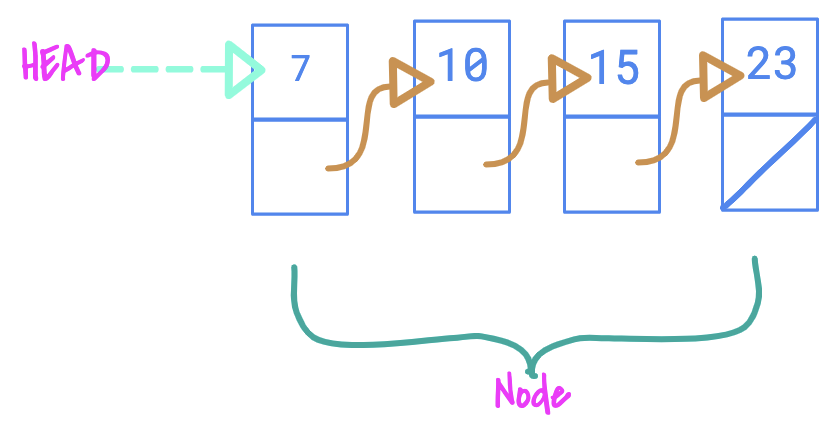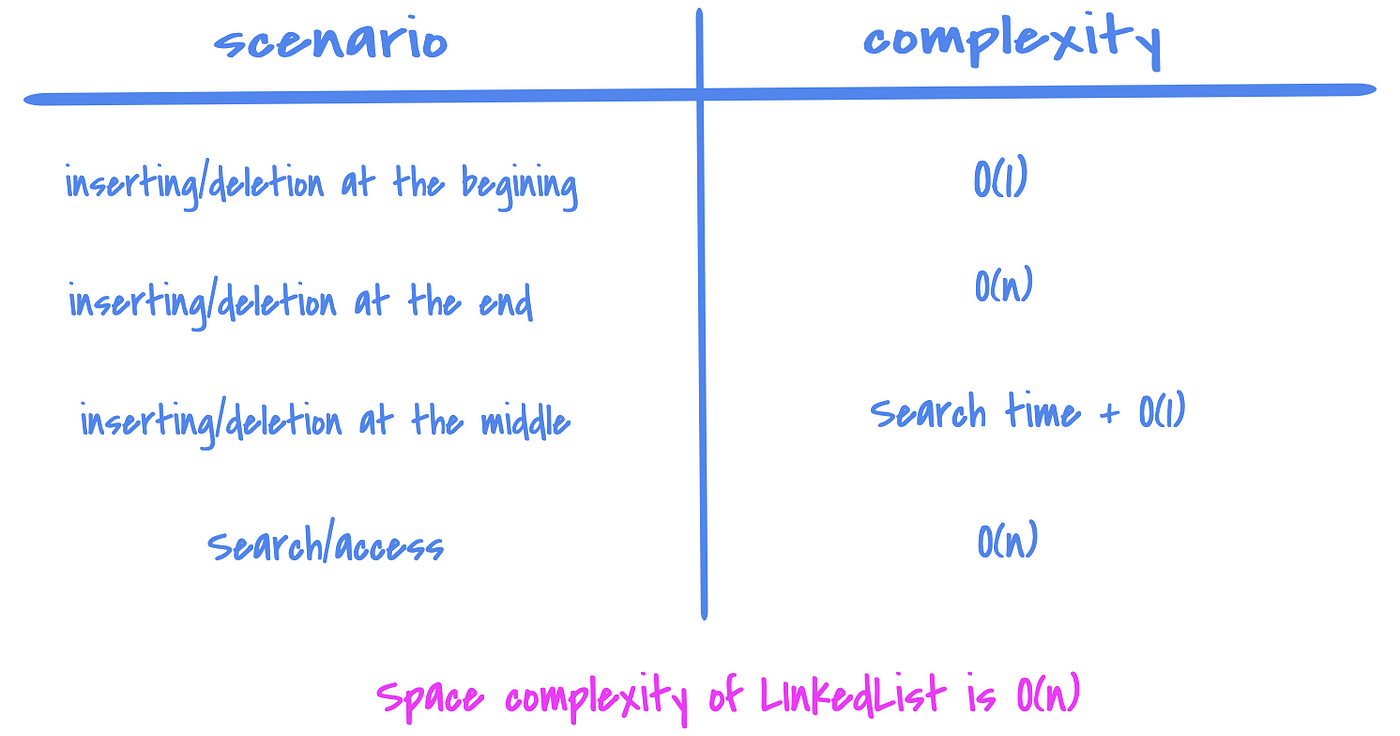Where Are Elements of Linkedlist Stored in Memeory?
Data anatomical structure — LinkedList
![]()

In the previous blog, we discussed arrays nonpareil of the most commonly renowned linear information construction in the programming world. Scorn its simplicity and popularity Array aside nature got few limitations,
- Arrays are static by nature which makes it less flexible to fit when the amount of data grows or shrinks
- Arrays are quite costly for common operations like insertion and deletion
In this blog, we are going to discuss another linear data structure named LinkedList which help to overcome a few limitations.
LinkedList:
LinkedList is a linear information structure where each element is an object. Unlike Array, LinkedList is doesn't have a contiguous retentiveness structure. Each element is linked to the next direct a pointer.
Each element in t He LinkedList is called Node. To each one node contains a cay (the data of interest) and an additional pointer for pointing the succeeding element in the list. Initial pointer in a LinkedList is called Head. It is necessary to mention that "Head" is not another node merely a pointer to the first element of the LinkedList. For an empty LinkedList value of Head volition personify null.
To store a linked list, we just necessitate to remember where the first element is. We can find the residual by following the pointers.

Here in the plot, as we see Oral sex is a arrow point to a lymph node(an object) which contains two pieces a key of value '7' and another pointer pointing to the next node containing the value '10'.
Implementation:
public class LinkedList {
Node head; // head of list /* Linked number Node*/
class Lymph node {
int data;
Thickening next;
// Constructor to create a new node
// Next is by default initialized
// every bit null
Node(int d) {
information = d;
next = null;
}
}
}
LinkedList Characteristics:
Dynamic nature:
LinkedList is a dynamic anatomical structure, means the list can grow Beaver State shrink depending upon the data devising information technology much powerful and stretched than Arrays. Unlike Arrays, LinkedList is not stored in a contiguous memory fix. For each one element int the list is spread across the memory and are linked by the pointers in the Node. Olibanum whenever a new element needs to be added a separate memory is allocated sufficiency to store some Francis Scott Key and the arrow to the next element.
This nature of LinkedList allows it to follow used Eastern Samoa the ignoble data body structure for several other dynamic structures like lots, queues etc
Easy intromission and omission:
Insertion and excision are the all but expensive operation in the Arrays. Information technology necessarily shifting of the smooth elements around the place of operation. Happening the mop up case when the array is full we end up in copying the entire array to a big indefinite to suited.
LinkedList makes this little easier. we need to allocate memory for the data to live inserted aside creating a node and bu adjusting the pointer around will do the job.
Thus LinkedList South Korean won itself the good prime while the aggregate number of objects is unknown at the beginning.
Linear traversal
Equally we know Arrays provide continual access time and also allows random access of the elements. On the perverse, the LinkedList provides only linear traversal thus the worst-case runtime could beryllium O(n) .
Also, it is granitelike to traverse the LinkedList backwards(however we can make it simpler with a doubly-joined list)
Memory custom
This characteristic of LinkedList is quite debatable. It is very obvious to see that LinkedList takes an superfluous memory space for the pointer. But contrariwise, most of the cases Array mightiness wind up with memory allocated only non used. LinkedList scores the extra points here by with efficiency occupying the spaces only necessary. This outweighs Array even with supernumerary memory for the pointer.
Time & Space complexity:

Improvisation to LinkedList
Doubly LinkedList:
Singly LinkedList or LinkedList is simpler to carry out, it is quite hard to get across that in reverse to have the best this we can use Doubly LinkedList, in which each node takes an extra pointer to point the previous particular to the element in addition to the pointer for the next item.
A doubly coupled list has more efficient iteration, especially if you need to always iterate in reverse and Sir Thomas More efficient deletion of ad hoc nodes.
Using "Tail" pointer:
IT might be handy for both cases to have a cursor for the dying item in the LinkedList. It is very common to regard a "Tail" pointer that points to the last element in the list. Can pointer non always is a performance improviser simply it tin ne'er hurt unitary to have information technology. IT might not be bonded it is useful forever but is wise to have when appropriate.
It is not very common to see LinkedList in your day-to-day development but LinkedList play key role in most of the former normally used things like stacks and queues. One very interesting application of LinkedList is in polynomial representation their manipulations. The main reward of a linked list for polynomial representation is that it can accommodate the number of polynomials of growing sizes so that their combined size does not exceed the total memory available. If you need a structure which needs to be flexible enough for the growing size of data you acknowledge where to look for.
References:
complete PDF on LinkedList and its applications
Where Are Elements of Linkedlist Stored in Memeory?
Source: https://medium.com/@itIsMadhavan/data-structure-linkedlist-e90aed6a4791
Post a Comment for "Where Are Elements of Linkedlist Stored in Memeory?"